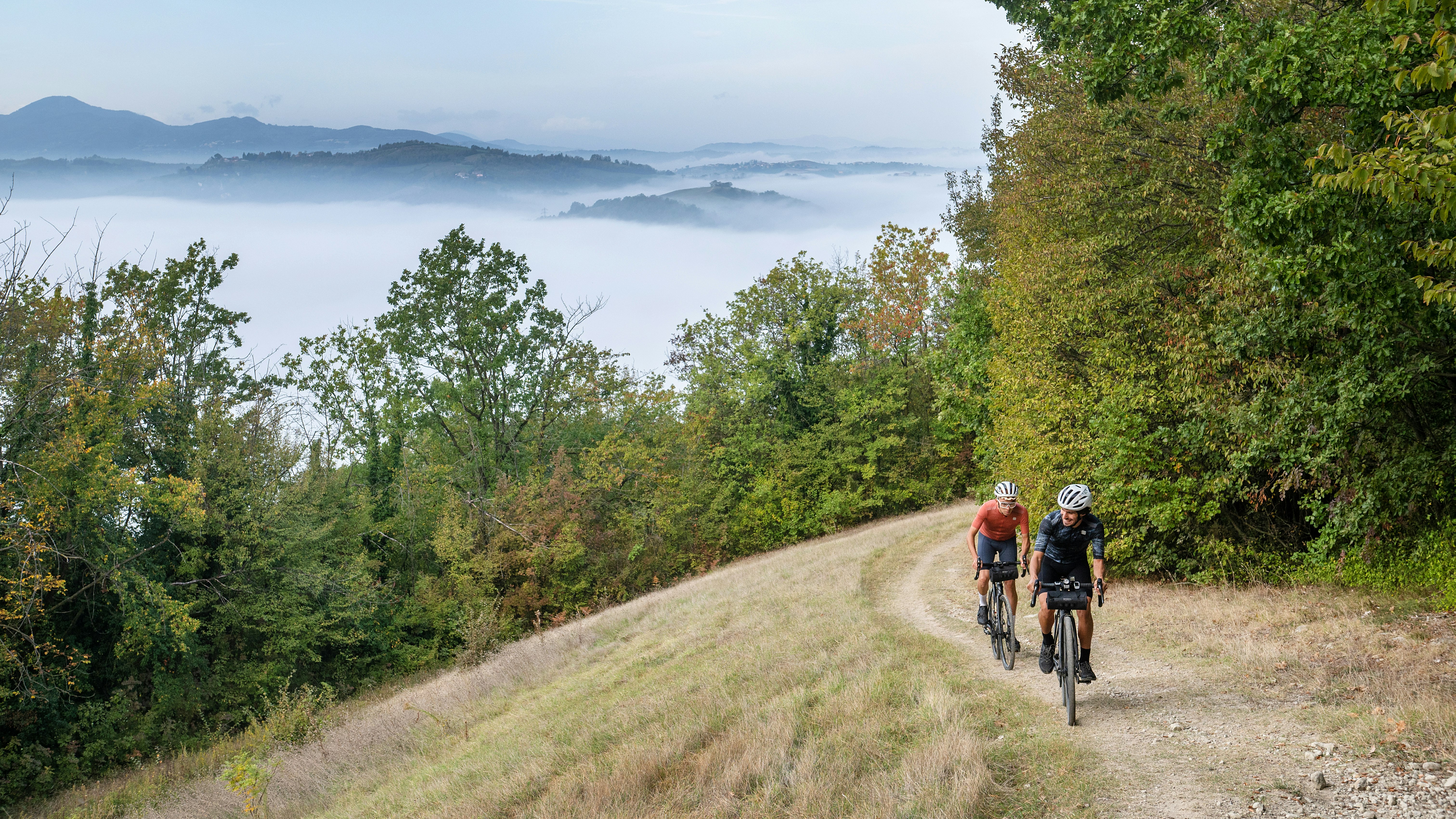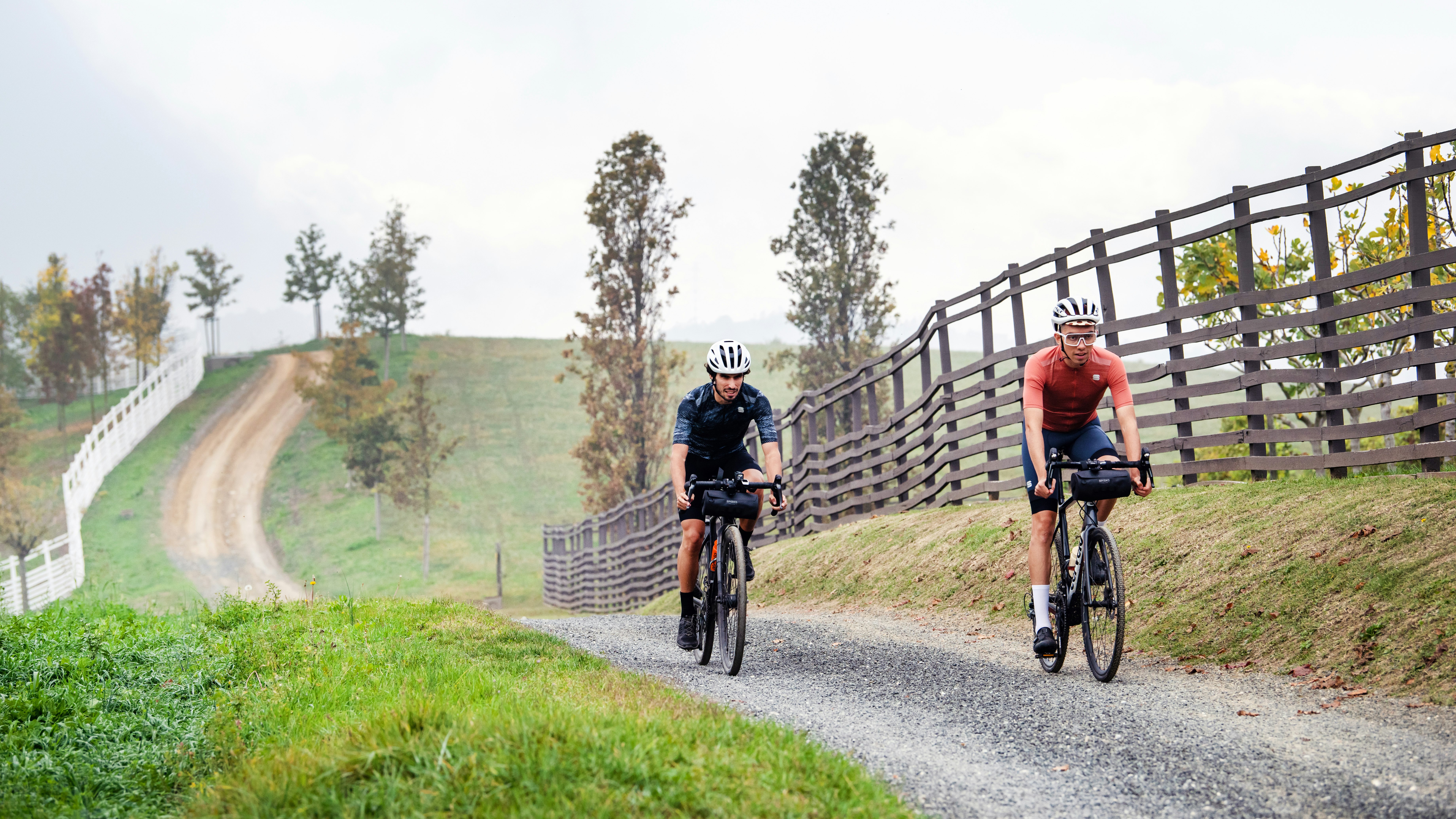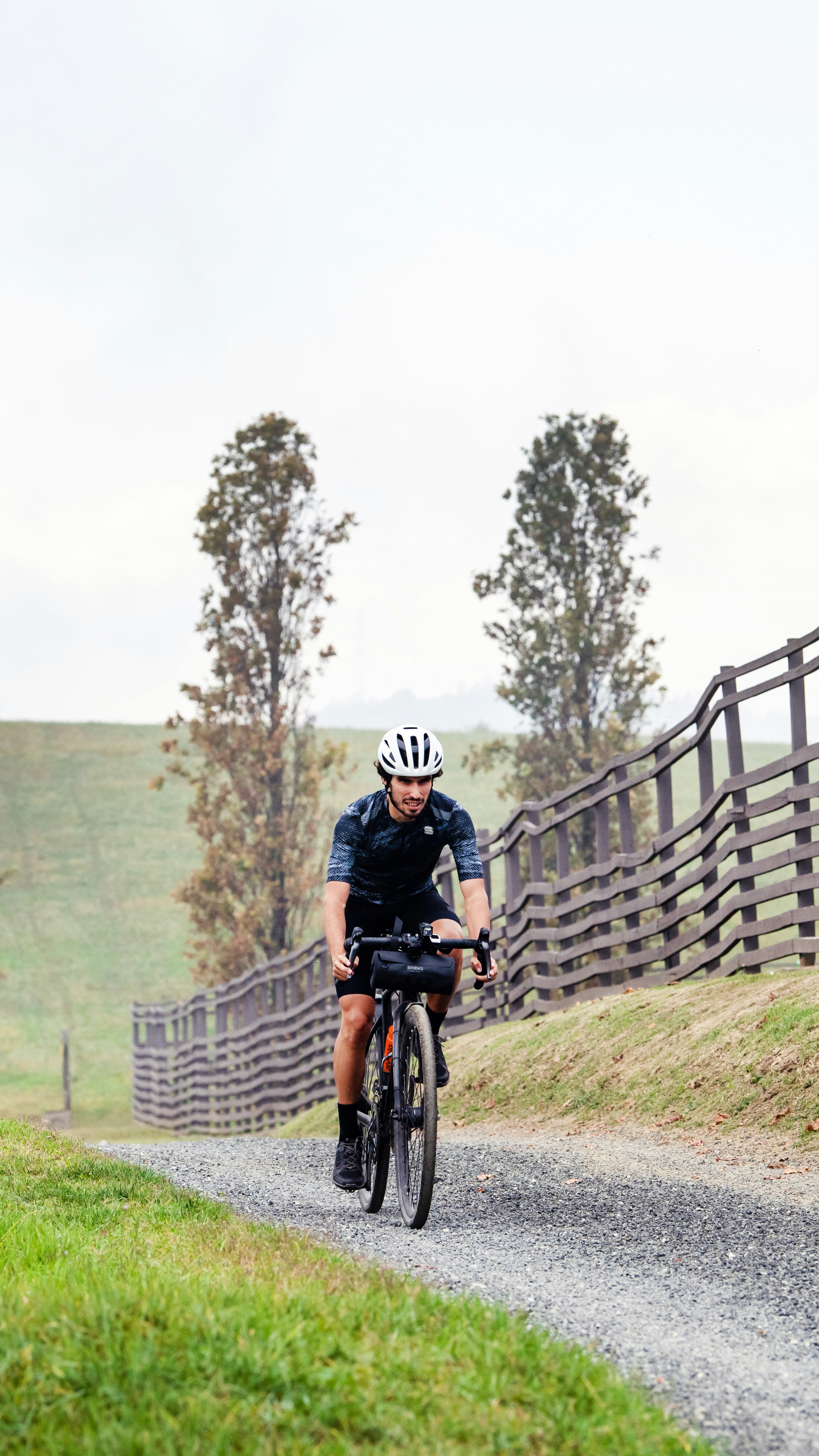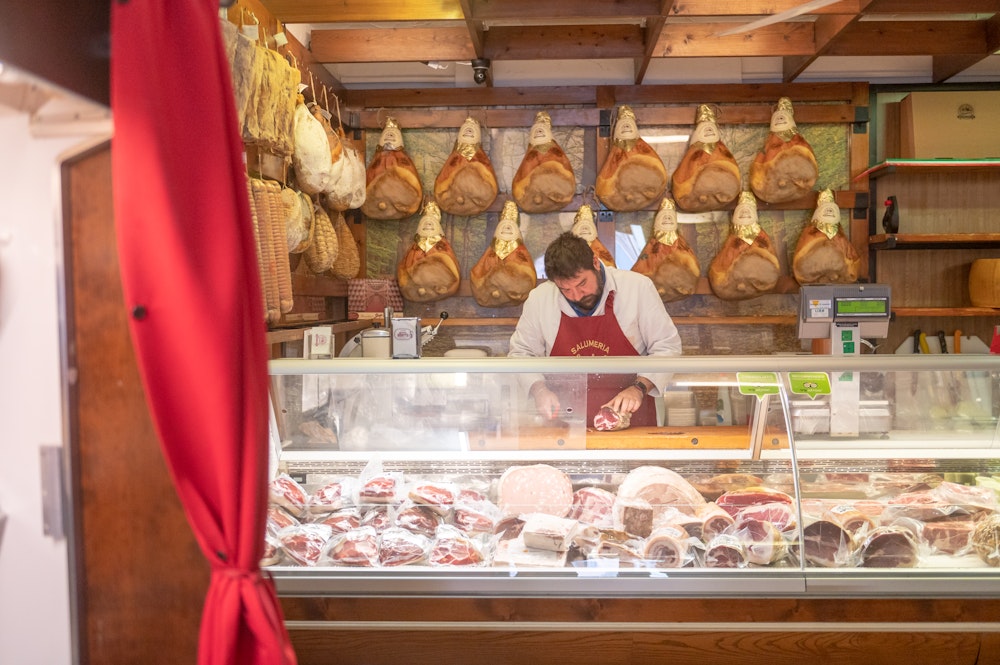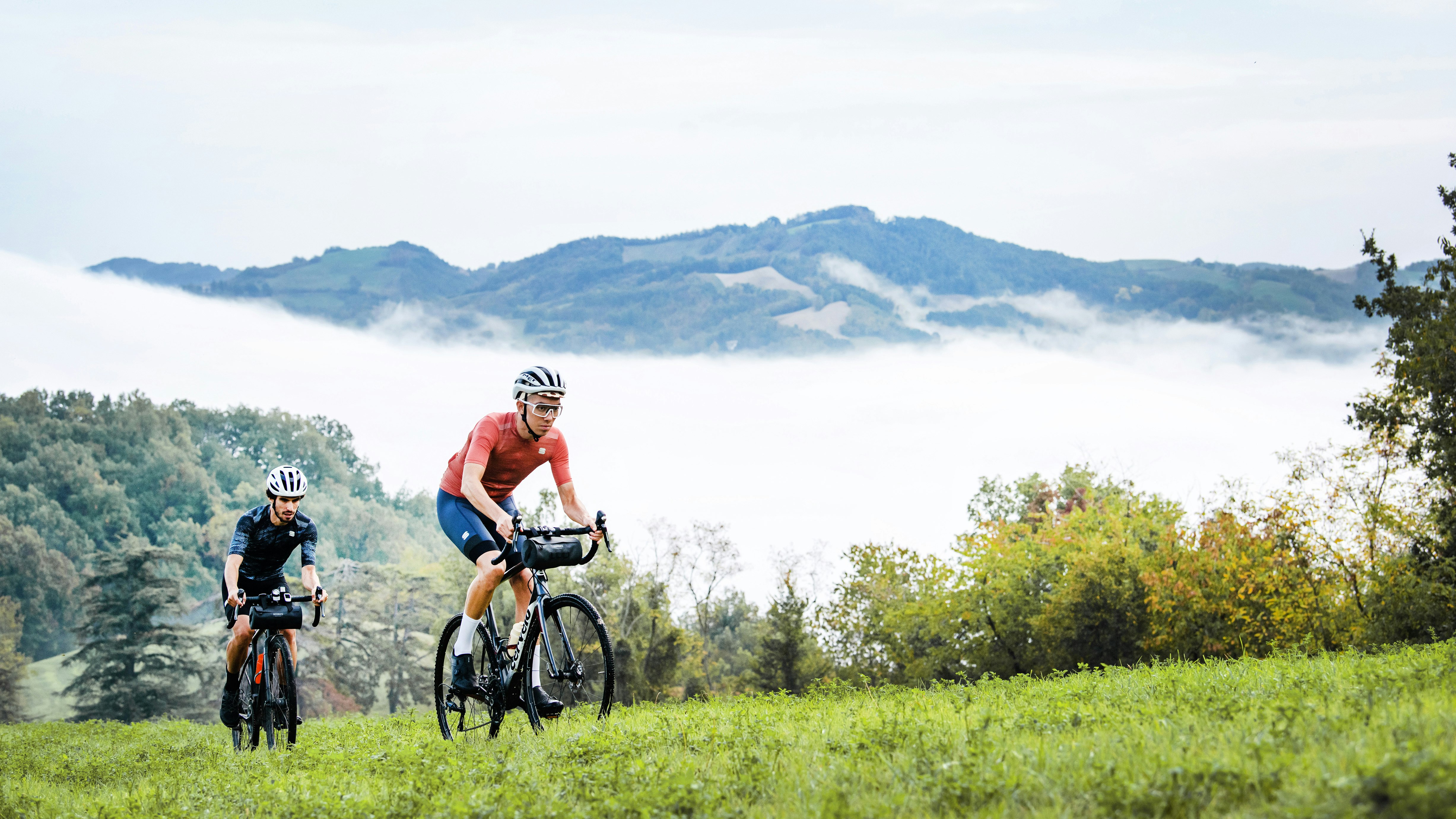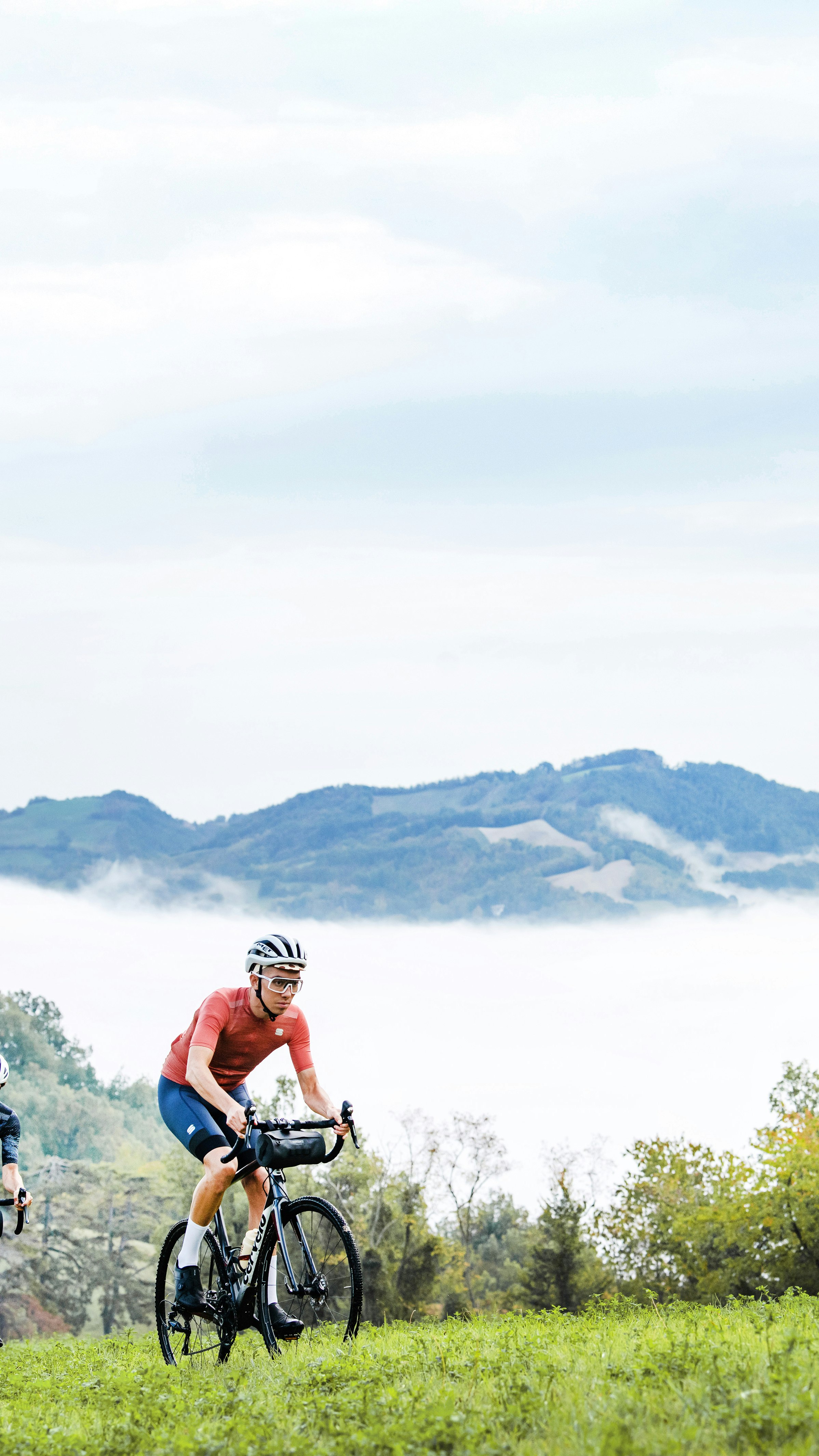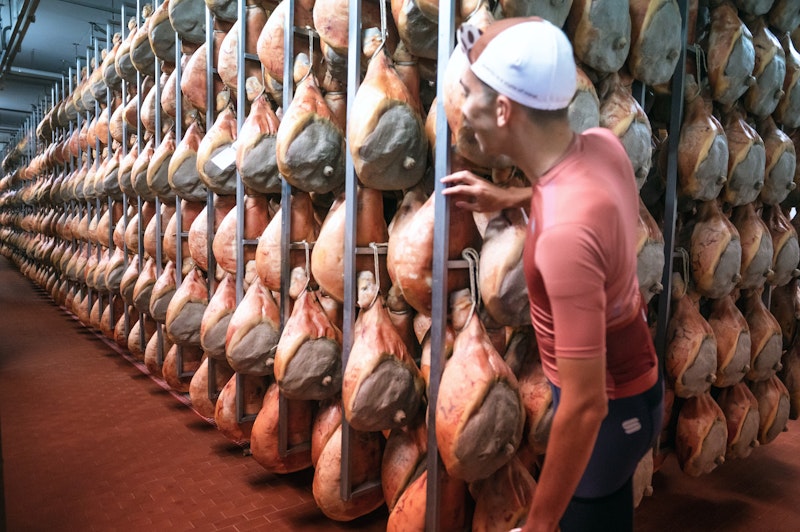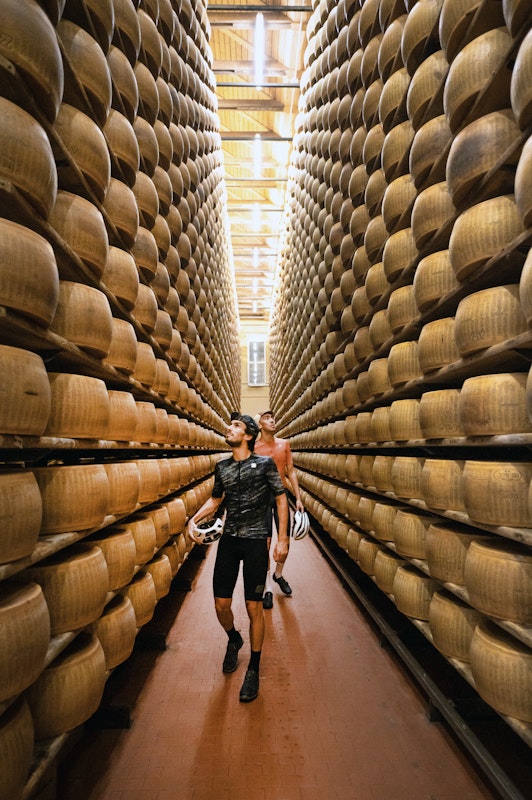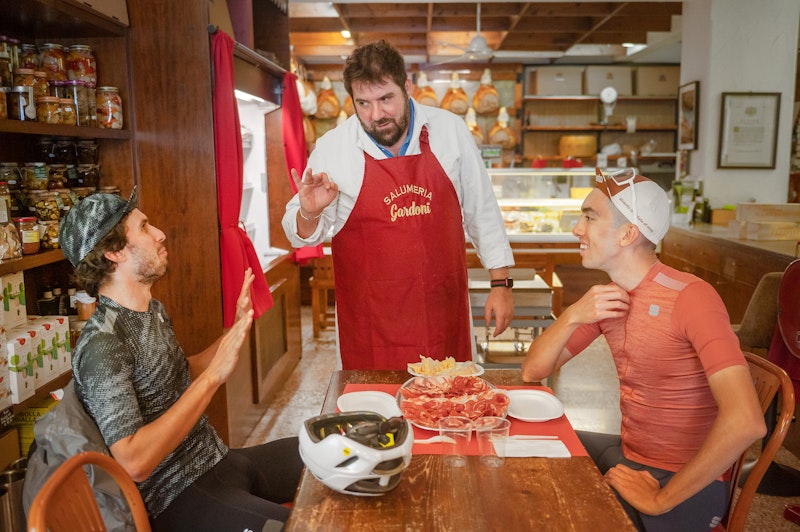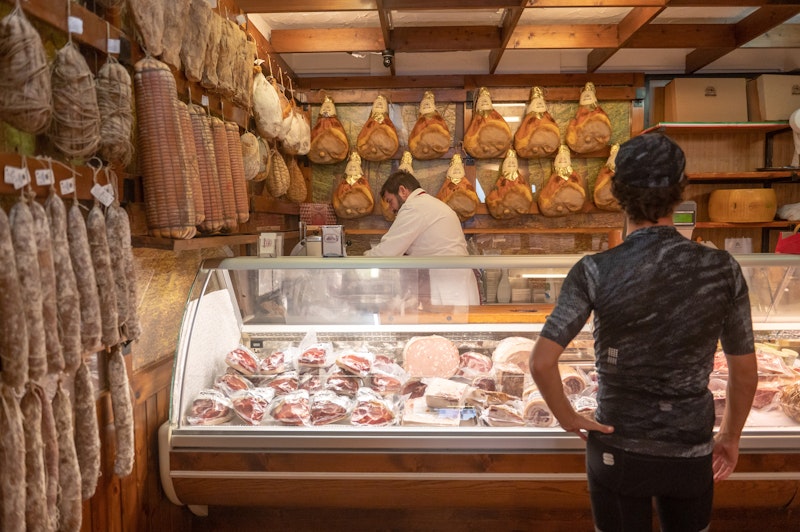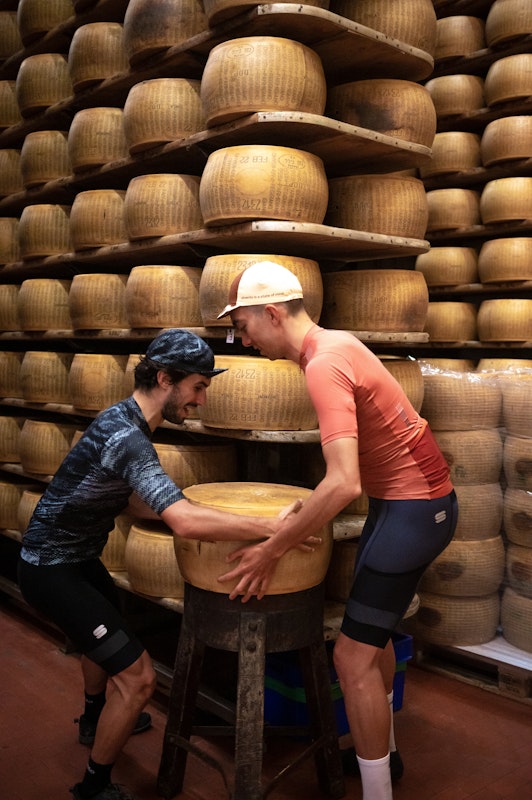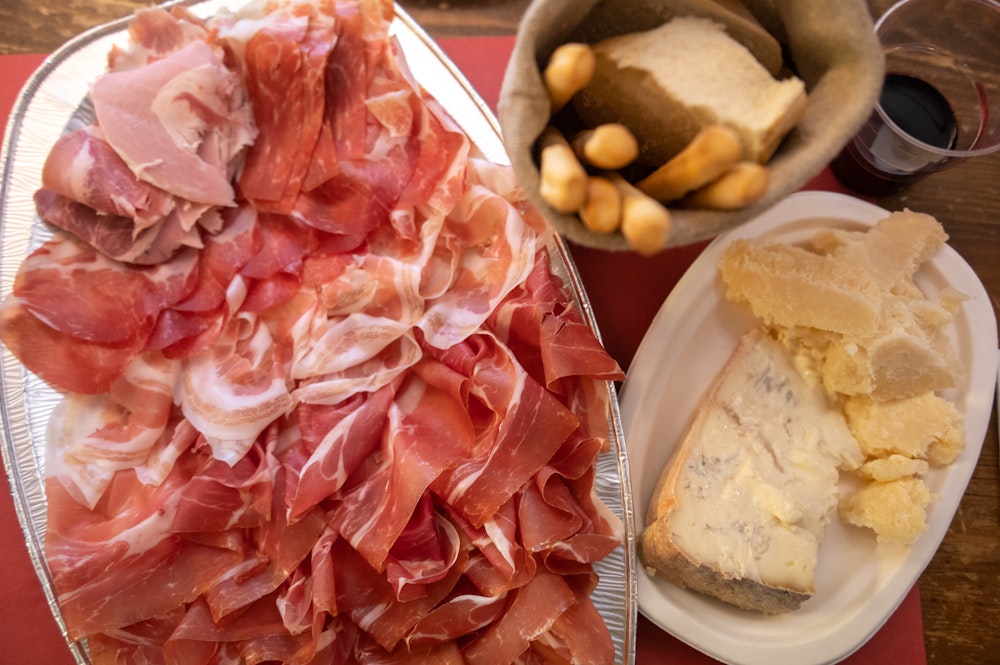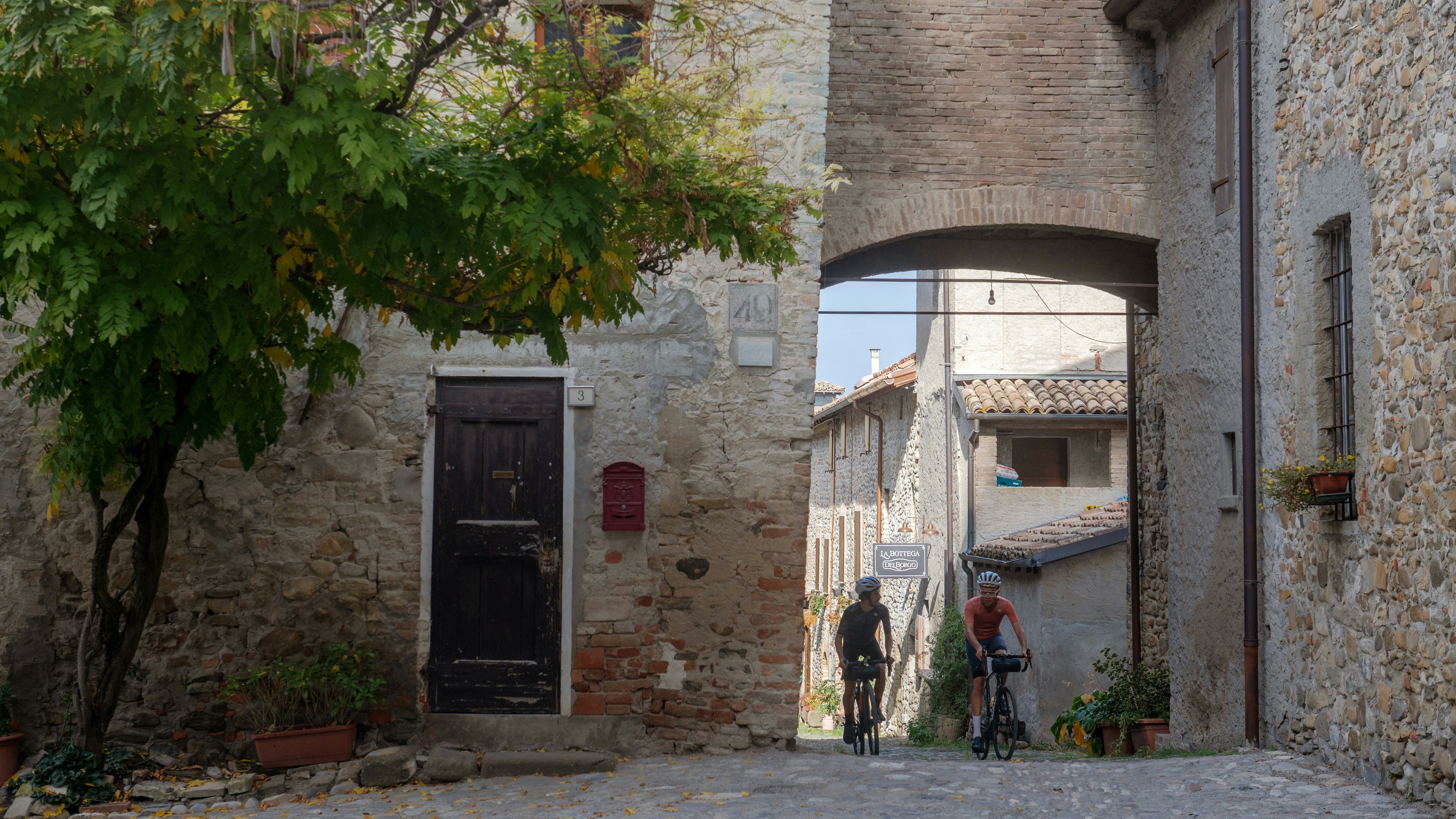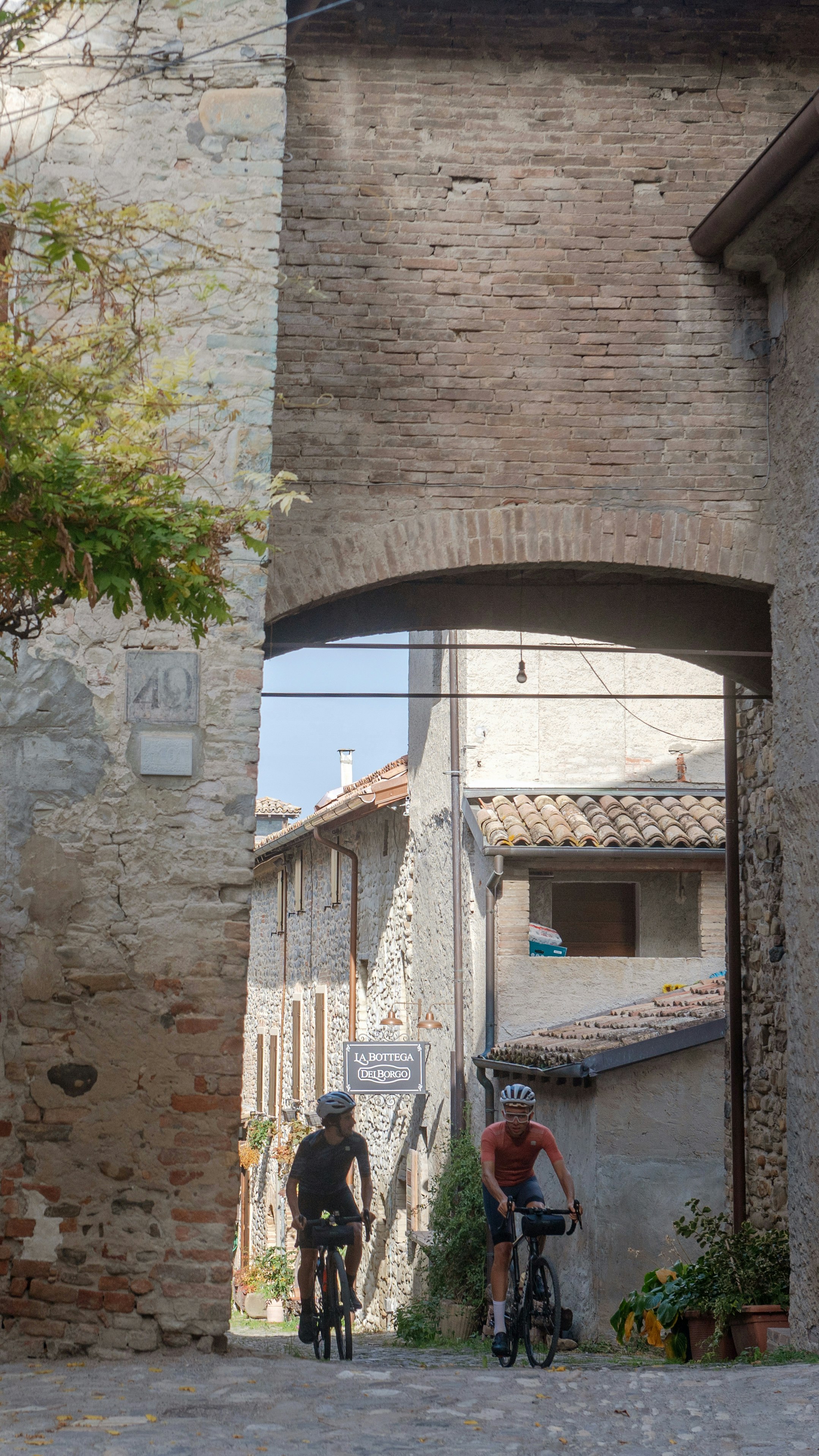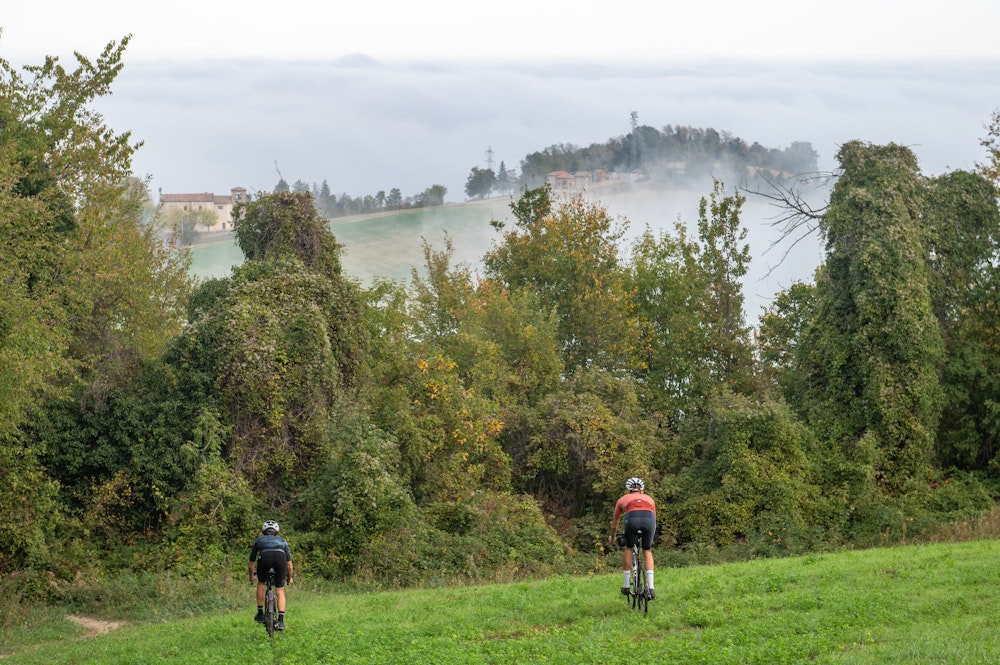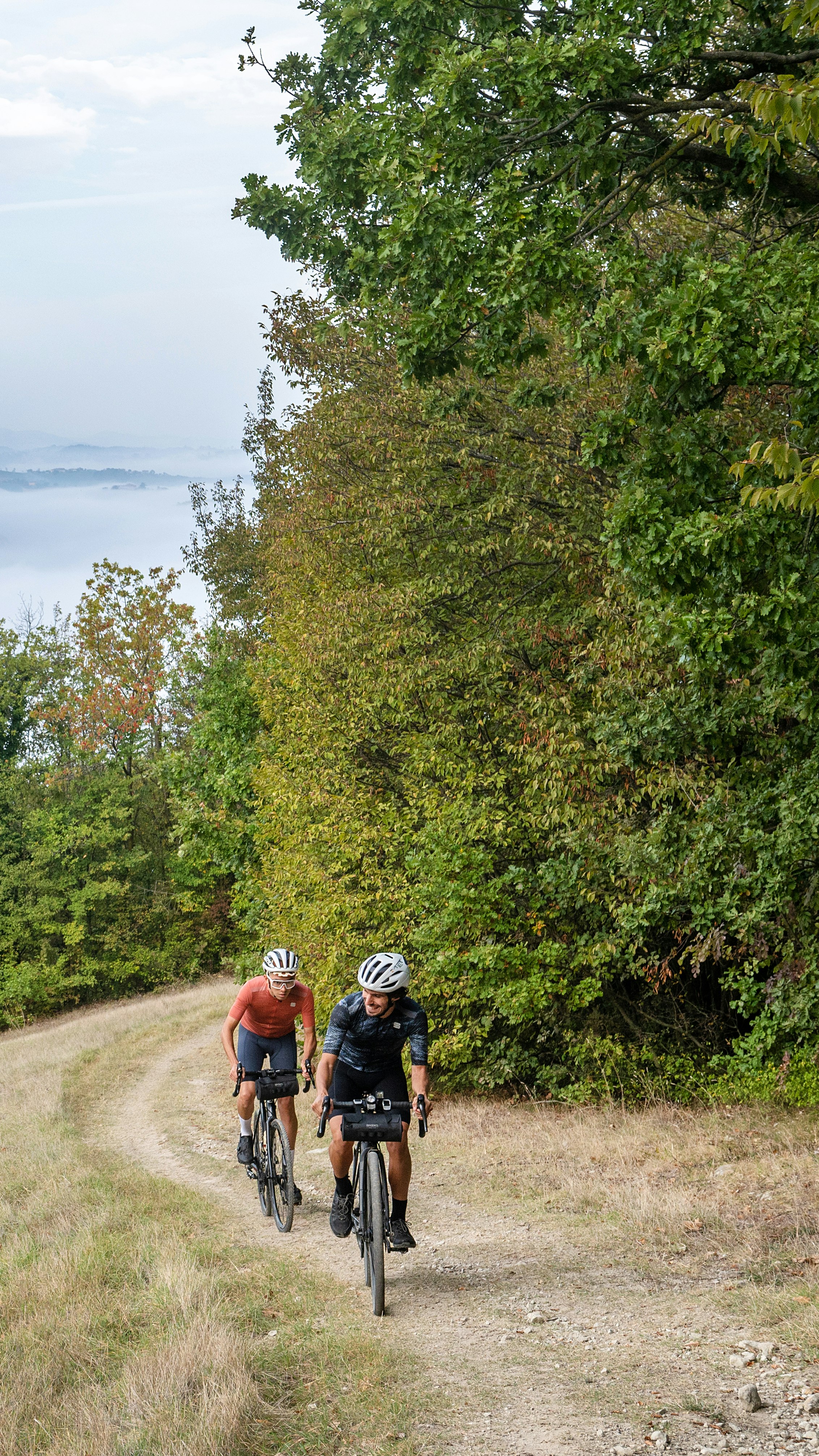
G’vol dal témp
The Parma Apennines as you’ve never seen them. Eno-gastronomic digressions included.
Elevation difference
4737 m
Total Length
265 km
Duration
3 Days
T
G’vol dal témp
00
Intro
01
Up and down between four valleys: Taro, Baganza, Parma and Enza
02
A little peace
03
Barboj, farmsteads and dirt tracks
Hard to disagree. It takes time for anything, but for cycling even a little more. It takes time in the preparation, from tyre pressures to getting dressed, in taking the things you washed the night before from the drying rack. In eating something before and after, in filling your water bottle at the drinking fountain. It also takes time to remind yourself to write to your friends in the morning: “fancy a little ride tonight? Just about thirty kilometres, I don’t have much time”.
Time doesn’t stand still in Parma, otherwise Giuseppe Verdi would still be playing, Bernardo Bertolucci’s films would be the only ones showing at the cinema, and Faustino Asprilla would still be scoring. But one has to travel a little further south of the city to observe a strange phenomenon of slowing down. The expansive plain begins to calmly ascend — it becomes a hill. You see more trees and fewer cars. The smell in the air becomes more sour from the fertilised fields, the road — if you choose right — becomes unpaved. And everything, little by little, becomes more fun. It seems that time passes differently around here.
Take the garden of the Rocca Sanvitale for example, in the centre of Sala Baganza — the 18th century Italian garden with a pond in the centre and walls all around. It feels like entering another dimension. It is no coincidence that all three of the gravel loops we are about to propose start and end here.
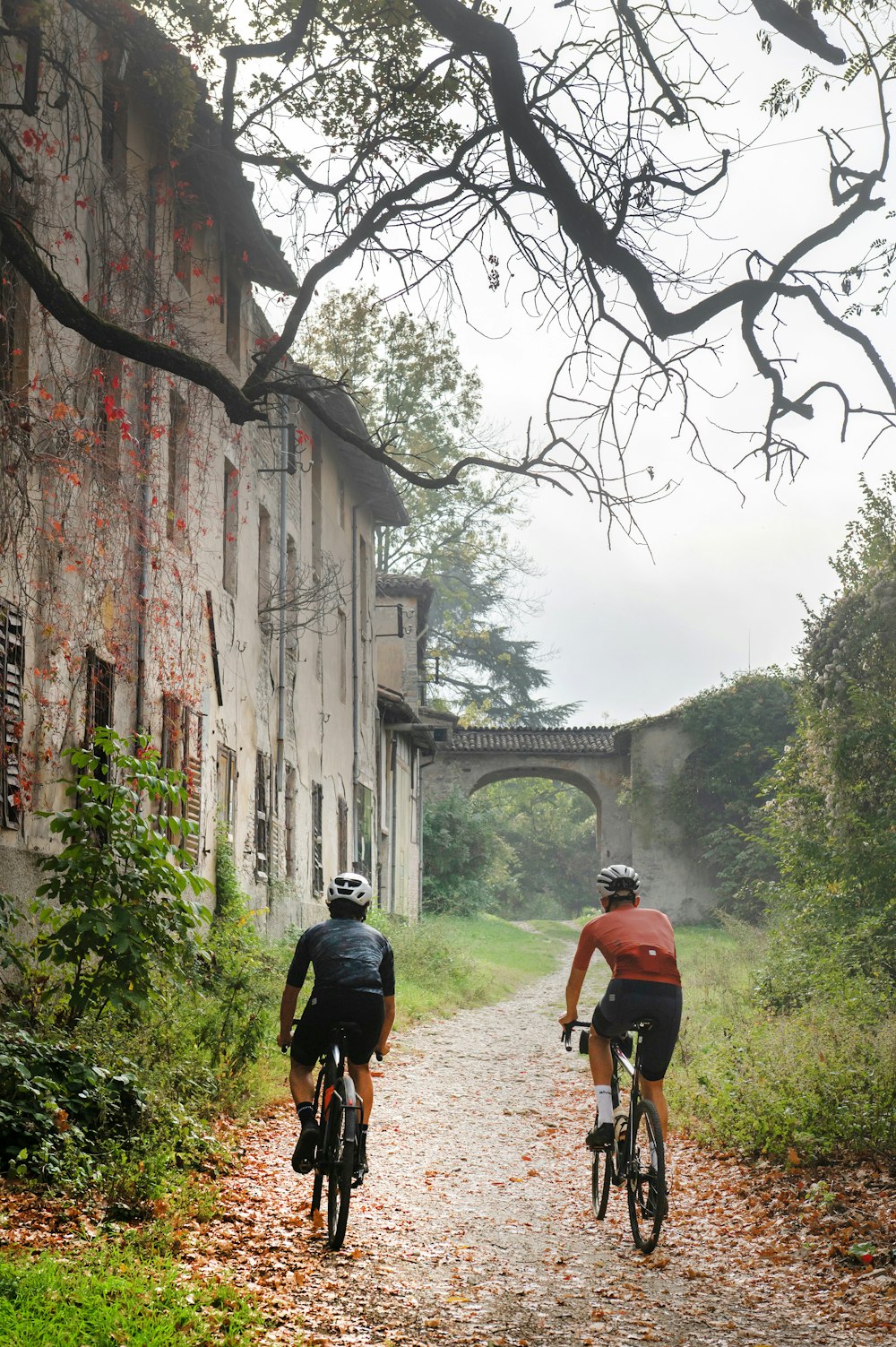
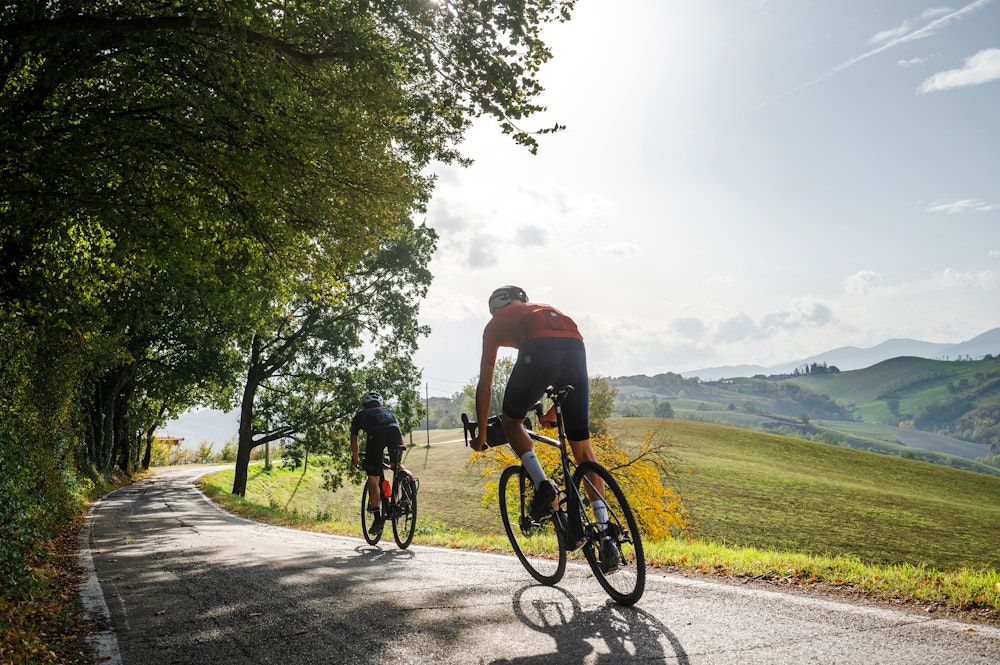
After the first 15-16 kilometres, all seems quiet. A little wall — Calicella — and a gravel descent towards Arola have already been tackled. We pass the splendid village of Torrechiara without realising that after the bridge over the Parma River, the rollercoaster begins. A road climb to Mulazzano Monte, a gravel section to reach Case Cantini and then Torre, a wall-like ascent towards Guardasone that begins as the two branches of the Termina river become one. The gradient and the view tell us that the pre-Apennines begin here.
A beautiful cart-track, which local bikers call le Coste or i Margini, leads to the highest point of these three days, the 500 metres or so of Bazzano. Some enthusiasts have turned these descents into real downhill trails — Bazzano and Monte Castello are home to the Toro Oro Bike Park (stuff to stay away from if you don’t have a full suspension bike).
Leaving the Pieve di Bazzano on the left, we ride along rolling peaks between places with names that seem to come from a nursery rhyme. Down to Lodrignano, pass Provazzano, before Neviano, and almost at Quinzano, you turn right — and after a few metres begin the descent towards the Cavirano wall.
Leaving Langhirano behind — the nursery rhyme wasn’t over — the road blends into gravel after Mattaleto. At the exact point where the asphalt ends, on the left of the road there is an iron mailbox, the American kind, with a red handle to open it. There is a sign that appears to have been there forever and reads: “whoever dirties the road must clean it”. Is this meant as a warning to those who dirty the road in the sense that they would like to pave it? It would indeed be a shame to ruin this beautiful white road with bitumen. Once past Vidiana we remain on the coast, before heading towards the castle of Torrechiara.
You turn left and seem to enter a private farmyard. The cart road passes between the vineyards and the view of the castle opens up. We find ourselves, amidst statues and sculptures, along the Sentiero d’arte, an artistic installation created for the occasion of Parma’s title as Italian Capital of Culture 2020.
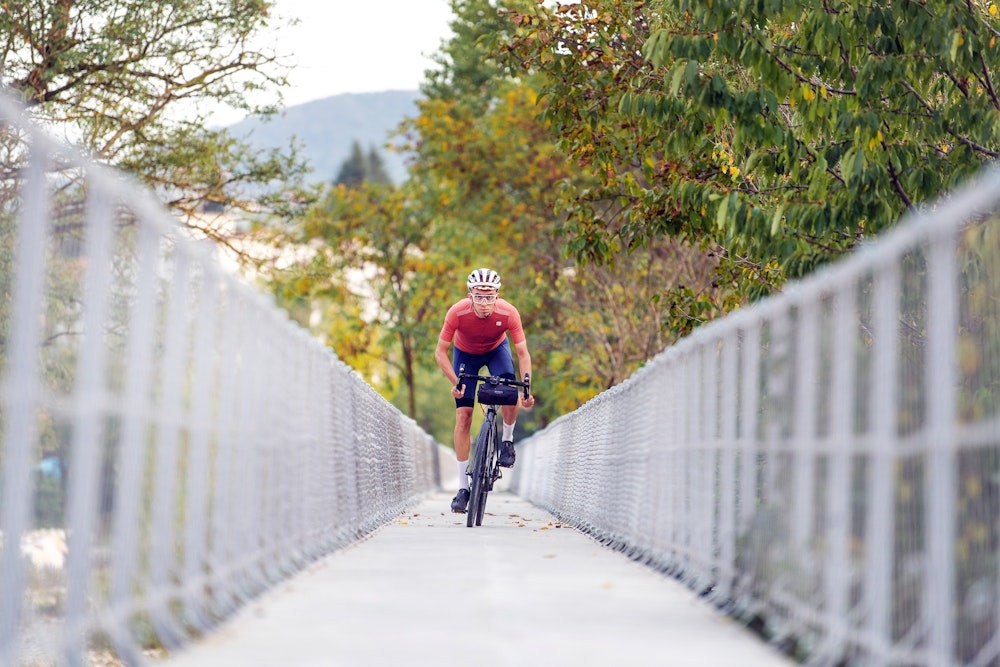
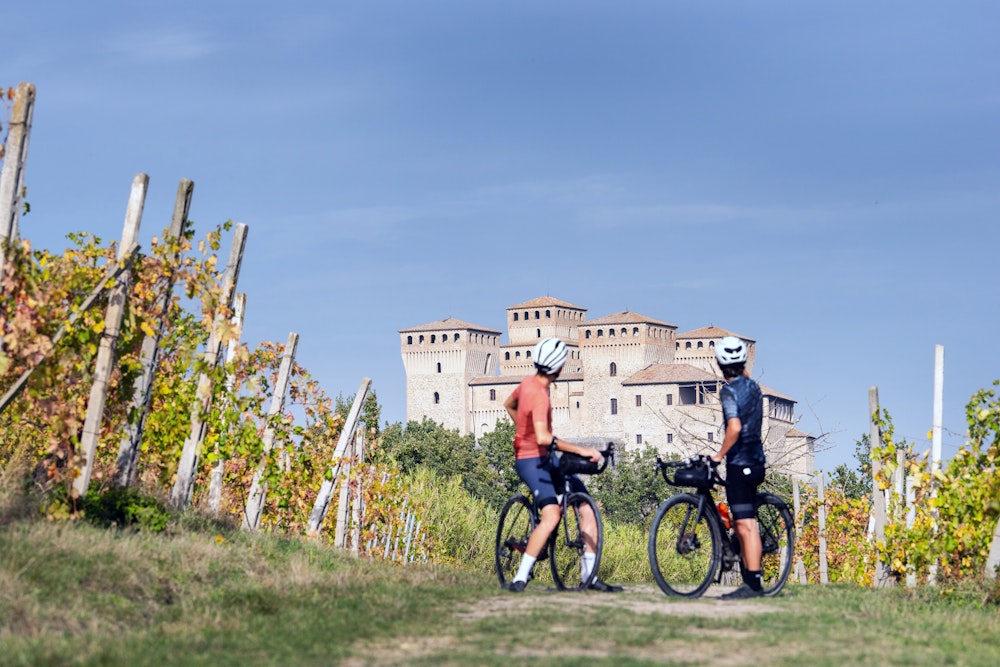
Another scenic spot is Barbiano, one of the hills most loved by cyclists in Parma. It has many slopes, and the option of a gravel summit finish (it’s steep but recommended). On the descent towards the Baganza river, you should stop at a beautiful stone church. It is said to be the first to be dedicated to St. Hilary, bishop of Poitiers, the 4th century theologian and philosopher (and later patron saint of Parma).
After crossing the provincial road, you reach a somewhat critical point, at least for me: the footbridge over the Baganza river.
The walkway is short and safe — there is a guardrail to prevent falling down. But it is designed to invite cyclists to get out of the saddle and climb the steps beside the strip of asphalt in the centre, on which the bicycle is pushed by hand. Ever since I was a kid, it has always attracted me to ride up it, climbing this 40-wide strip of tarmac on a steep slope. More than once I fell badly.
Before the last reconnaissance of the route, to write this piece, I finally made it. The secret is that you have to take it at full speed, but above all it was the first time I had a gravel bike that didn’t cushion the impact but rode up on it properly. I climbed my two-metre-Mortirolo.
Shortly after exiting the footbridge, we take the unpaved bike path along the Baganza, which some bulldozers and trucks are trying to lengthen. The stretch along the river is mostly in the woods and lacking in technical features. The only caution; avoid braking sharply on a stretch of cobblestones which, every so often, create a small stream of gurgling water. At the end you make a first acquaintance with the Boschi di Carrega, and the last effort of the day is to return the bike to Sala Baganza, strictly via the recently constructed cycle path.
On the second day, the first climb is approached almost immediately. In the centre of Felino, you head for the castle, which has stood there since the end of the 9th century. Today it is private property, but you can visit the walls, the courtyard and the dungeons. In the cellars there is also the Museum of Salame, the sausage that has made Felino famous across the world.
Without reaching Barbiano, we return to the provincial road to approach a climb among the vineyards. The cart-track is almost invaded by tall grass, and you must be careful that the branches of some of the shrubs do not catch in your spokes. The road surface changes a lot depending on the weather. This year the season has offered little rain, but when it does, the ground becomes a clay-like quagmire in no time at all. A stupendous dirt road, the only one here that holds a candle to the Tuscan ones, leads us towards the village of Tiorre. Wide roadway, compacted by the occasional passage of motor vehicles, full of bends and depressions. Impossible to get bored, also thanks to the dive towards San Michele (which is very fast and fun).
And the fun continues between Vallezza and Mount Mengo, beside the Baganza and Taro rivers; a sequence of easy gravel, good asphalt, difficult gravel, and rough asphalt. You appear at Fornovo Taro rather drunk on bends and uphill relaunches, but luckily there are only two asperities left: the climb from Ozzano to the coast, with panoramic views, and the one through the Boschi di Carrega to return to Sala Baganza. In between, the Taro escorts us towards the plain. Along the river we find broad and wide cart-tracks that, once we enter the dense forest, become single track.
The already yellowing leaves on the ground make the path clearly visible.
This place is perfect because it adapts to all characteristics. Those who want to open up the throttle will find it extremely challenging, while those who want to enjoy it calmly will welcome its surface, not tormented by stones and roots.
We are on the Parmesan variation of the Via Francigena that connects Collecchio and Fornovo.
But the mostly flat path becomes magical when it runs alongside the Naviglio Taro, almost Amazonian. As early as the year 1550, a dozen canals derived their waters from the river to power the millstones and irrigate the land. Now the mills at Oppiano, Giarola and La Maraffa have disappeared, but the canal — surprisingly full of water, despite a dry Taro — has remained crucial for agriculture.
The only point where you have to get off your bike is a lock on the Naviglio Taro, just before arriving at Corte di Giarola — unless you want to get over an iron grid and a small wall with a pair of cyclo-cross bunny hops.
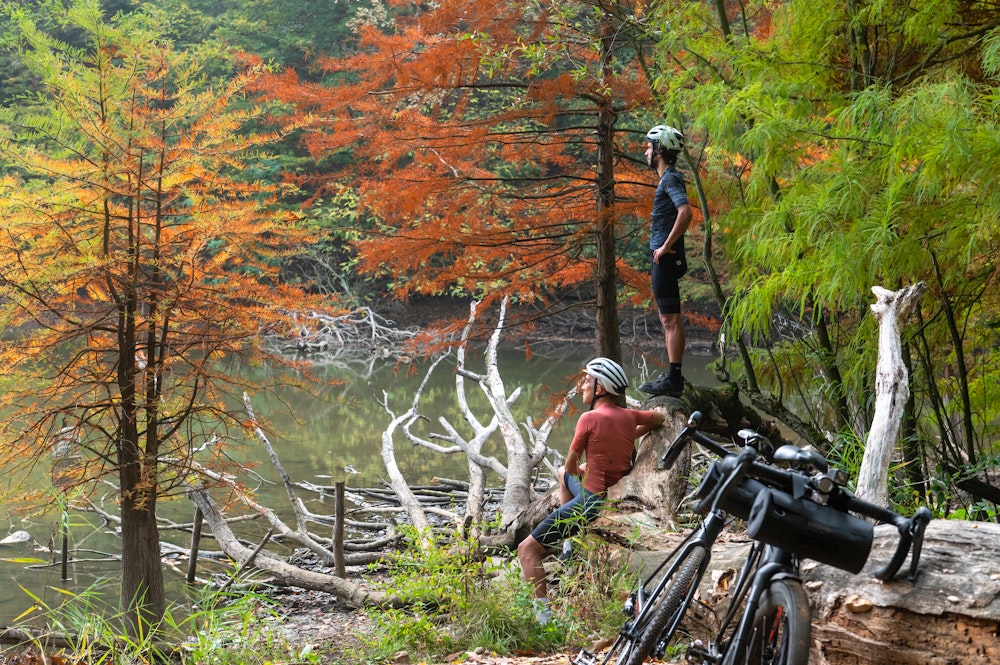
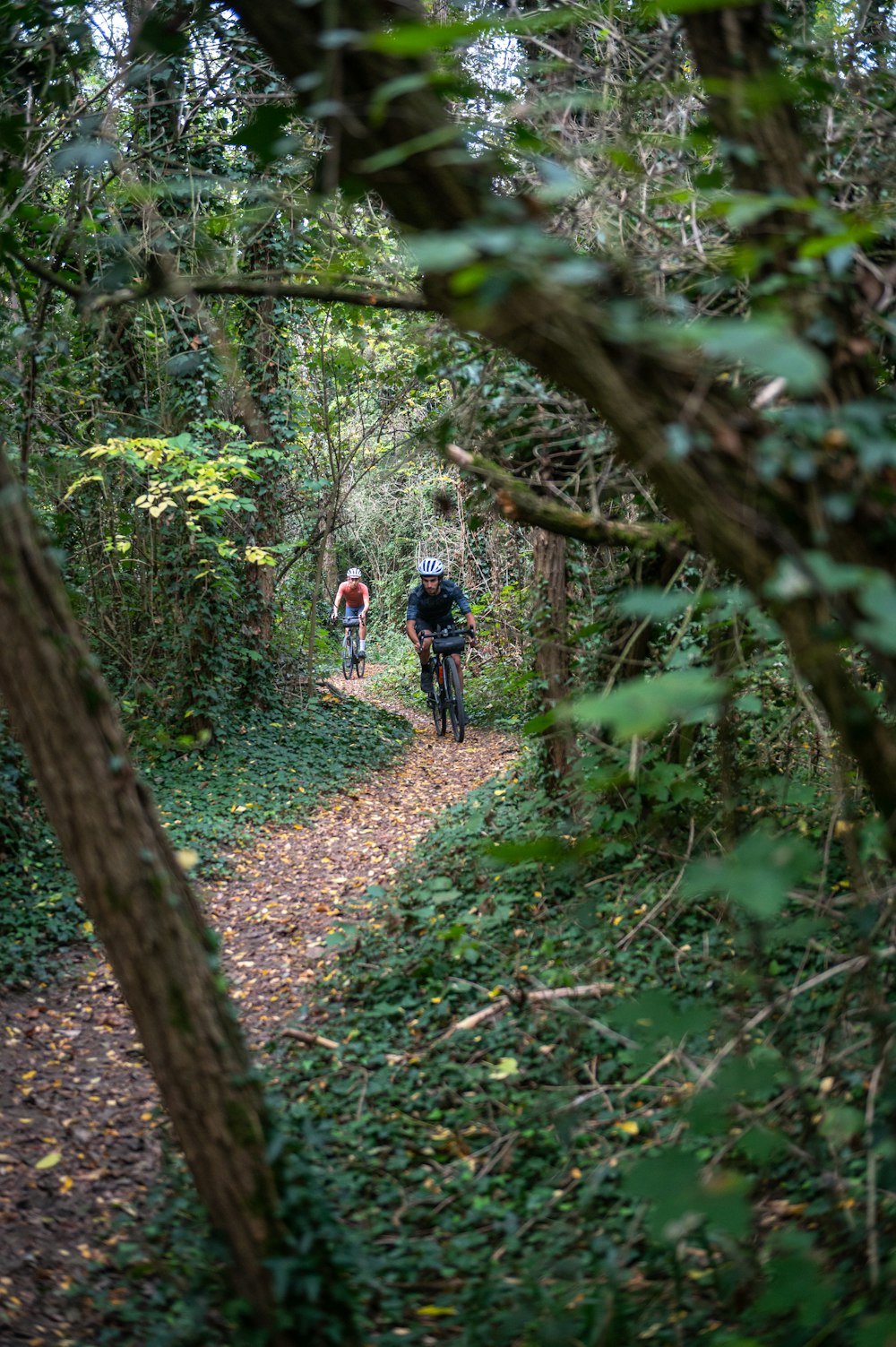
After giving Corte di Giarola the time it deserves, and again, speaking of time, we point our wheels in the direction of the Boschi di Carrega.
These woods are a big cycling playground with well-marked trails, but perhaps the best thing to do is to get lost in them. The first time I ventured here, I discovered a lake. Actually, there are at least three, and this one is called Lago della Svizzera. That day I found two young men sitting on a bench in front of a red brick house. They were a few years older than me, and as I leaned my bike against a tree to take photos, I was struck — at that age, one is struck by people who are older than you, even if only by a couple of years — by their discussion; they were talking about alcohol, anxiety problems, loneliness. And while smoking marijuana, they praised the tranquillity of the place. They came back to mind because I recently came across a video clip of a song by the Friulian indie rock band Tre Allegri Ragazzi Morti, recorded right here. You can see the lake, the bench, the red brick house. After some time, I can only confirm what those two young men thought of the lake. And I assure you, I didn’t smoke.
The last day’s route is no picnic. Of the three, it is the one with the most tarmac, but there is no shortage of challenging climbs. We start immediately with that of Gallo. Then, at Strognano, the road becomes a toboggan leading to Langhirano. Before arriving in Mulazzano, turn left to descend towards the small hamlet of Tassara; nothing more than a handful of houses, stables and dilapidated silos, where only a few farmers and their livestock now live. Having forded the Masdone stream, we ascend slightly towards Rivalta and its Barboj Park, which takes its name from the bubbling methane gas that is produced by the underground, practically miniature, geysers.
Climbing up towards Monte Fornello, the view of ploughed fields, patches of oak trees, acacias, willows, and clay gullies is splendid. This is the area where Rural, a festival of agricultural biodiversity, takes place. The descent from the small village of Monchio is great fun — it’s well maintained by local cyclists, in a couple of hairpin bends it presents almost parabolic curves to be tackled at full speed. And it is all to be enjoyed because the next two climbs, towards Trinzola and Bazzano (locality Pozzolo), are two gruesome walls.
As you approach Traversetolo, you notice a tower sticking out among the trees on the top of a small hill: it is the Guardiola, towards which the people of Traversetolo used to look to see the weather coming. Clouds above the Guardiola meant incoming rain.
After Traversetolo, which deserves a careful and curious stop, the finish has only one significant asperity: a little-known dirt slope towards Barbiano. After that, the only thing left to do is to descend and rediscover places encountered over the past few days. Felino castle and its centre, the bridge over the Baganza river, the garden of Rocca Sanvitale.
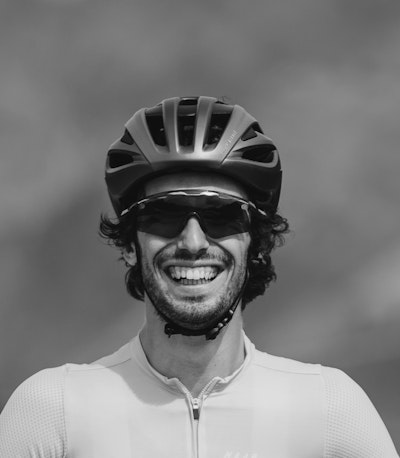
Texts
Michele Pelacci
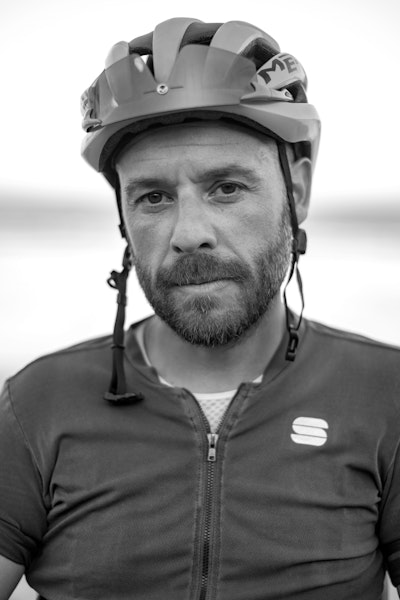
Photos
Paolo Penni Martelli
Cycled with us
Donato Cafarelli, Michele Pelacci
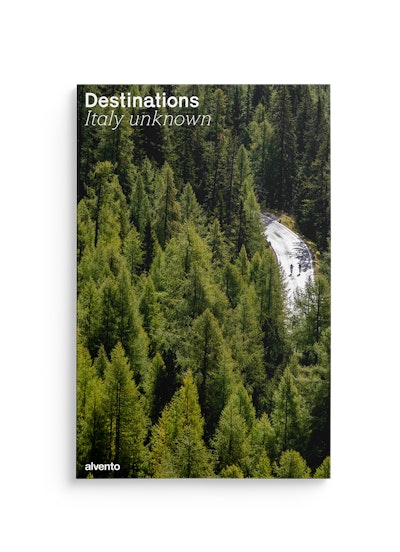
This tour can be found in the super-magazine Destinations - Italy unknown / 1, the special issue of alvento dedicated to bikepacking. 13 little-trodden destinations or reinterpretations of famous cycling destinations.
